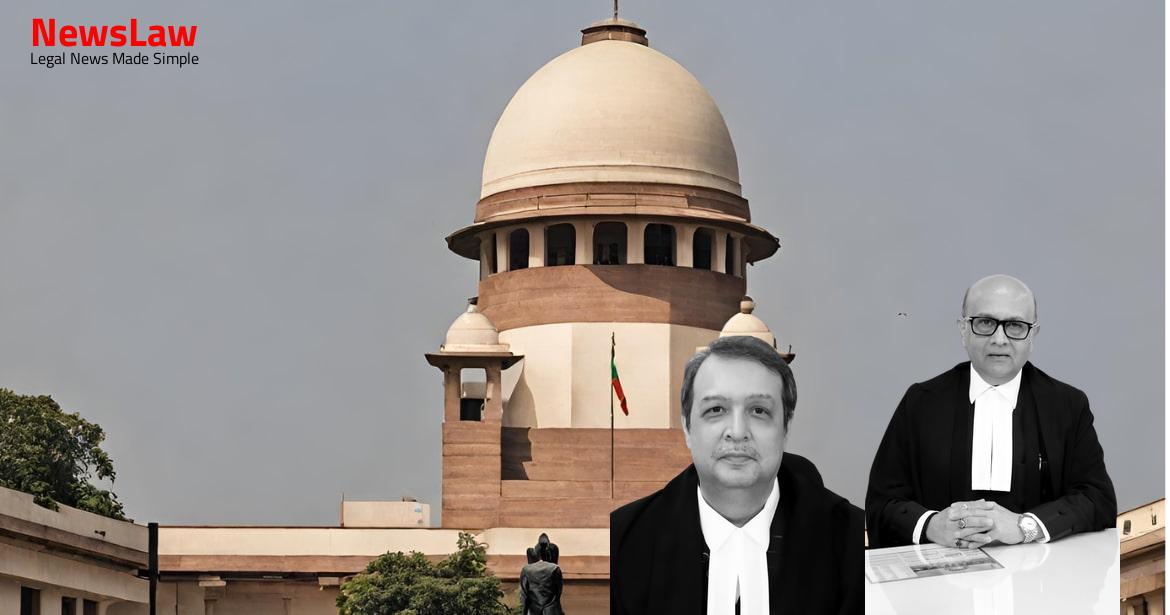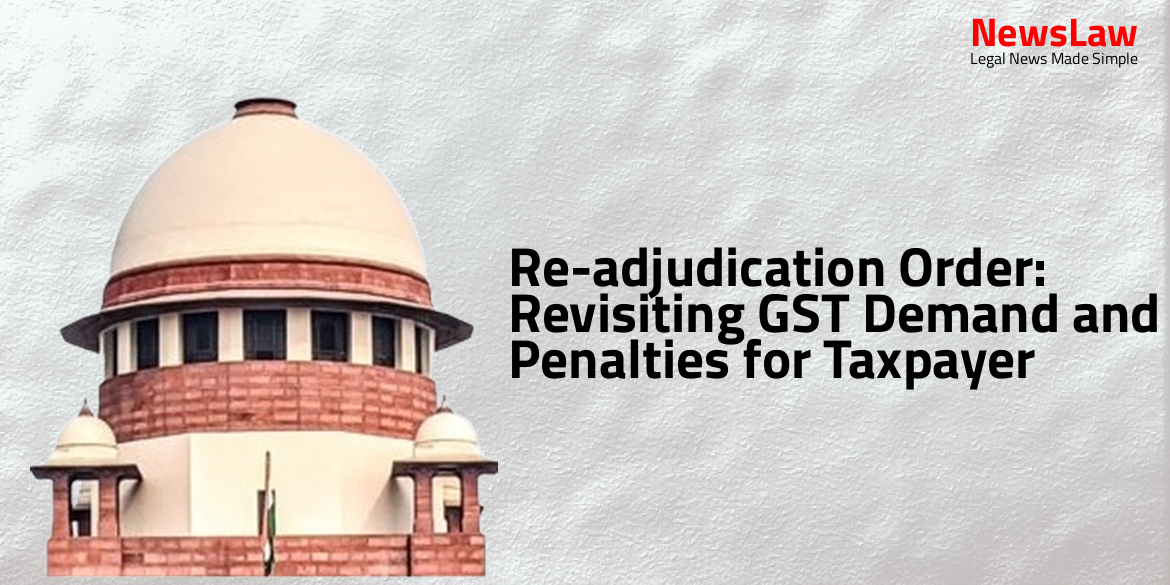Explore a case where the court’s legal analysis played a crucial role in determining the fate of an insolvency matter. The focus is on the interpretation of key statutory provisions, such as Section 25 and Section 7 of the IBC, shedding light on the complexities of debt resolution. Stay tuned for insights into limitation laws, acknowledgment of liabilities, and the overriding effect of the IBC in corporate insolvency cases.
Facts
- Corporate Debtor revised one-time settlement offer on 20 December, 2018.
- Appellant Financial Creditor declared Corporate Debtor’s account as NPA on 30 September, 2015.
- Adjudicating Authority admitted the petition and imposed a moratorium as per IBC.
- Loan amounts were disbursed and default occurred leading to NPA status.
- Application for initiation of CIRP under Section 7 of IBC was filed by Financial Creditor.
- Debt settlement offers were made by Corporate Debtor.
- Adjudicating Authority admitted the application for CIRP.
- Appellate Tribunal’s judgement allowed the Corporate Debtor’s appeal against the admission of CIRP application.
- Corporate Debtor engages in the manufacture of tempo and tractor components.
- Negotiations with bankers for finance expansion in 2012-2013.
- Loan facilities were sanctioned by Financial Creditor since November 2012.
- Resolution for loan and security documents executed by Corporate Debtor on various dates.
- Offer of one-time settlements made by Corporate Debtor on 12 December 2018 and 19 December 2018.
Also Read: Interpretation of Corporate Guarantor under IBC
Analysis
- Section 25 of the Indian Contract Act and its proviso to Section 7(4) of the IBC are highlighted.
- The IBC is focused on the revival of a corporate body through appointment of a Resolution Professional.
- The importance of ascertaining default and passing timely orders by the Adjudicating Authority is emphasized.
- Different sections of the IBC such as 7, 8, 9, and 10 are discussed in relation to financial creditors and initiation of resolution process.
- The significance of acknowledging debt within the period of limitation is explained.
- The distinction between acknowledgment under Section 18 of the Limitation Act and promise under Section 25 of the Contract Act is made clear.
- The role of the Adjudicating Authority in admitting or rejecting applications under Section 7 of the IBC is outlined.
- The impact of settlement offers by the Corporate Debtor on the resolution process is analyzed.
- The necessity of communication and compliance with orders under Section 7(5)(a) and (b) of the IBC is stressed.
- The relevance of Section 5 of the Limitation Act and Article 137 for applications under the IBC is discussed.
- Pre-existing disputes between the parties and their impact on CIRP applications are mentioned.
- The NCLAT’s handling of the case, including considerations of limitations and payment agreements, is critiqued.
- Adjudicating Authority can reject application if default has not occurred, or application is incomplete, or disciplinary proceeding pending against proposed resolution professional.
- Applicant must be given notice to rectify defects before rejection of application.
- CIRP starts on admission date of application under Section 7(5) of IBC.
- Conditions for invoking Section 25(3) include referring to a debt that could have been enforced if not for limitation, a distinct promise in writing signed by debtor or agent.
- Debtor can agree in writing to pay whole or part of a debt enforceable within limitations of law under Section 25(3).
- An acknowledgment in writing of liability, signed by the party against whom such property or right is claimed, is required as per Section 18 of the Limitation Act.
- The IBC provisions have an overriding effect over other laws.
- The Corporate Insolvency Resolution Process under the IBC is not adversarial to the interests of the Corporate Debtor.
- When interpreting a statutory provision, the legislative intent of the statute must be considered.
- Limitation is a mixed question of law and facts, requiring relevant facts to be pleaded and evidence to be adduced.
- Acknowledgment of present subsisting liability, made in writing and signed before the relevant period of limitation has expired, commences a fresh period of limitation.
- NCLT/N has the discretion to entertain an application/appeal after the prescribed period of limitation, as per Section 238A of the IBC.
- Entries in books of accounts and balance sheets of a Corporate Debtor can amount to an acknowledgment under Section 18 of the Limitation Act.
- A promise to pay is not essential for an acknowledgment under Section 18 of the Limitation Act.
- Section 25(3) applies only where the debt is enforceable against the defendant but for the law of limitation.
- The IBC aims to provide equal treatment to all creditors of the Corporate Debtor and protect the livelihoods of its employees/workers.
- The explanation for delay determining ‘sufficient cause’ is dependent on the facts of each case.
Also Read: Quashing of FIR and Charge-sheet: Legal Analysis
Decision
- The Adjudicating Authority will reconsider the application for CIRP after giving both parties the opportunity to file additional affidavits and documents.
- The Appellant Financial Creditor may have rectified defects in its application if given the opportunity.
- The Appellant should have been notified of the proposal to close the proceedings to rectify any defects.
- Documents can be filed until the application for CIRP is finally dismissed based on the ruling in Dena Bank case.
- The appeal is allowed, and the impugned judgement and order of the NCLAT is set aside regarding the closure of CIRP proceedings.
Also Read: Judicial Promotion Dispute Resolved
Case Title: KOTAK MAHINDRA BANK LIMITED Vs. KEW PRECISION PARTS PRIVATE LIMITED (2022 INSC 800)
Case Number: C.A. No.-002176 / 2020



